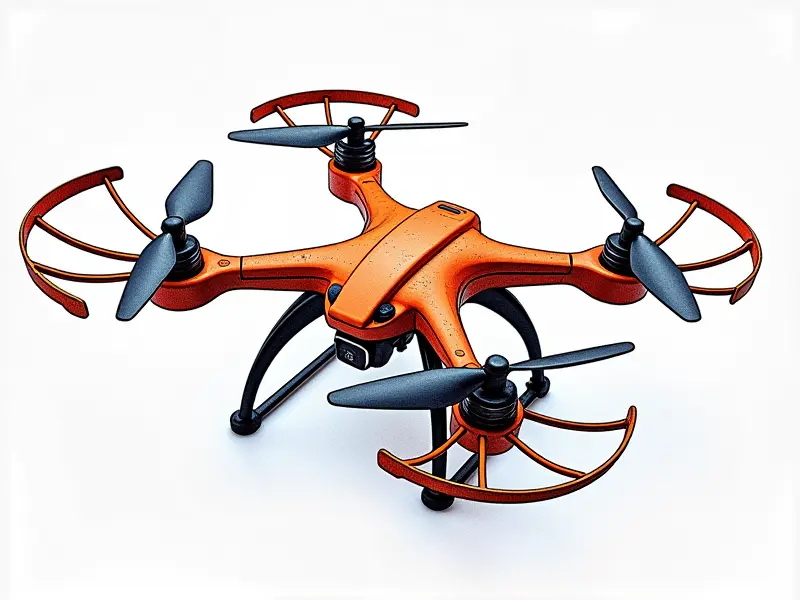How stable is flight control?

Mastering Stability in RC Drone Flight
The stability of an RC drone during flight is crucial for both beginners and experienced pilots. Achieving a stable flight ensures that the drone can perform its intended tasks effectively, whether it's capturing aerial footage or participating in FPV racing.
To enhance stability, start by ensuring your drone is properly calibrated. This includes balancing the propellers and adjusting the center of gravity. Additionally, using high-quality components such as motors, ESCs (Electronic Speed Controllers), and batteries can greatly improve performance.
FPV Racing Drones: Stability and Control Tips
For FPV racing drones, stability is paramount to achieving fast and precise maneuvers. Here are some tips for maintaining control:
- Adjust Propellers: Use propellers that match the motor's RPM requirements.
- Tune PIDs: Fine-tuning pitch, roll, and yaw rates can significantly enhance stability.
- Use Lightweight Frames: Lighter frames reduce inertia and improve responsiveness.
Enhancing Stability in RC Aircraft Flight
RC aircraft require careful consideration of aerodynamics to maintain stable flight. Here are some key points to consider:
- Airfoil Selection: Choose airfoils that provide optimal lift and drag.
- Balancing Weight Distribution: Properly balance the aircraft's weight for better control.
- Fuel Management: Ensure consistent fuel flow to avoid engine stalling or surges.
Understanding Flight Stability in RC Helicopters
RC helicopters are known for their complex flight dynamics. Maintaining stability requires a deep understanding of the following factors:
- Main and Tail Rotor Synchronization: Proper synchronization is essential to avoid yaw oscillations.
- Gyro Sensitivity Settings: Adjust gyro sensitivity to match your flying style.
- Balancing the Main Rotor Head: Ensure that the rotor head is perfectly balanced for smooth flight.
Achieving Smooth Flights with RC Airplanes
To achieve smooth and stable flights with RC airplanes, follow these guidelines:
- Trimming Elevator and Aileron Settings: Properly trim your control surfaces for optimal flight.
- Using a Stable Wing Design: Opt for wing designs that minimize turbulence and provide steady lift.
- Maintaining Battery Health: Keep batteries in good condition to ensure consistent power delivery.
Top Tips for Stable RC Quadcopter Flying
Quadcopters are popular due to their maneuverability, but maintaining stability can be challenging. Here are some tips:
- Balancing the Frame: Ensure that your quadcopter frame is perfectly balanced.
- Tuning ESCs and Motors: Properly tune these components to achieve optimal performance.
- Maintaining Propeller Balance: Balanced propellers reduce vibrations and improve stability.
The Role of Gyroscopes in RC Drone Stability
Gyroscopes play a critical role in maintaining the stability of RC drones. They work by detecting rotational movements and adjusting the drone's orientation accordingly. Understanding how to tune your gyroscope settings is essential for achieving smooth, stable flights.
Boost Stability in Your Next Flight
To boost stability in your next flight, consider these practical steps:
- Pre-flight Checks: Always perform thorough pre-flight checks to ensure everything is functioning correctly.
- Weather Conditions: Choose favorable weather conditions for optimal performance.
- Practice Regularly: Consistent practice improves your flying skills and enhances stability over time.
Secrets to Maintaining Flight Stability
Maintaining flight stability involves a combination of technical adjustments and piloting techniques. Here are some secrets:
- Proper Calibration: Regularly calibrate your drone's components for optimal performance.
- Advanced Tuning Techniques: Learn advanced tuning methods to fine-tune stability settings.
- Pilot Experience: Experienced pilots can adapt their flying style to maintain stability in challenging conditions.
Techniques for Enhancing Flight Stability
To enhance flight stability, consider the following techniques:
- Damping Systems: Incorporate damping systems to reduce vibrations and improve control.
- Advanced Propeller Designs: Use propellers with advanced aerodynamic designs for better performance.
- Sensor Integration: Integrate additional sensors like accelerometers and barometers for enhanced stability.
Why Flight Stability Matters in RC
Flight stability is crucial in RC models because it directly impacts the safety, performance, and enjoyment of flying. A stable flight ensures that your drone or aircraft can handle various conditions and tasks effectively, whether you're capturing stunning aerial footage or participating in competitive races.

